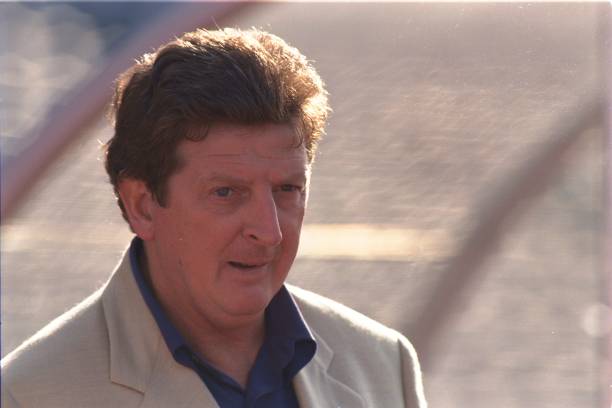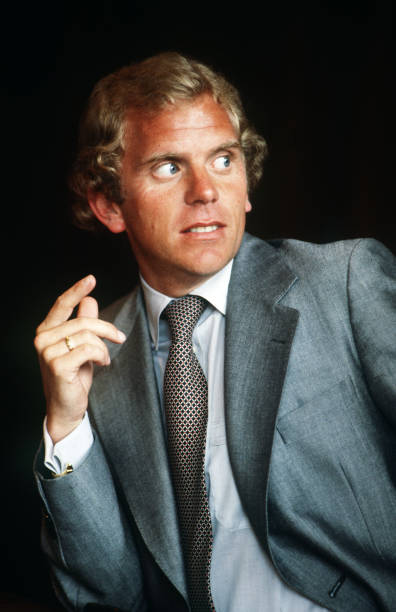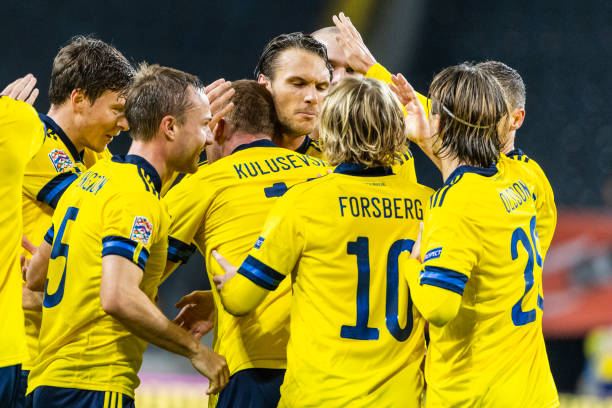When the name Roy Hodgson is brought up, what comes to your mind first? Maybe as the manager who took Fulham to the Europa League final and an FA Cup victory. Maybe as someone who has travelled the world, experienced different things in football. Or maybe as someone who failed at Liverpool and subsequently at England. A veteran, a journeyman or maybe a washed up dinosaur, Hodgson, now 73, has been given a lot of nicknames in his career, most of them depending on how you look at his long career and even where you live. For Roy, his failed tenures in England largely outweigh the good that he has achieved in football. In Sweden though, it is a totally different story.
Hodgson is a legend in Sweden. Brighton and Hove Albion boss Graham Potter says so himself who also began his managerial career in Sweden in Ostersunds. His status as a legend is not limited to just his achievements with Halmstad and Malmo but also how Swedes think about football. Hodgson’s first success as a manager came in Sweden when he won the title with Halmstad in 1977, the first league title in the club’s history. Halmstad usually spent their days at the bottom places of the league table in Sweden before Hodgson’s appointment so his league win was a credible achievement for the then 29 year old Englishman. Roy won the league for Halmstad again in 1979 and then led Malmo to 5 successive league titles from 1985 to 1989.
“You won’t get many more experienced in world football than Roy Hodgson in terms of his variety of experience. In Sweden, he’s a legend.”
-Graham Potter on his experiences while managing in Sweden.

Hodgson’s managerial career began with a simple phone call from Halmstad chairman, Stig Nilsson, to Bob Houghton, who was coaching the Swedish giants Malmo. “Yes, I do. His name is Roy Hodgson” were the words exchanged between Nilsson and Houghton and Roy was contacted. Halmstad played a friendly against Bristol City and Hodgson was one of the people attending. Bristol City ran riot and won 4-0, Hodgson was left unimpressed but still jumped at the chance of managing a first team, and the rest as they say, is history.
To fully understand the depth of how Hodgson became a legend in Sweden, we have to back up the story a little bit.
It all started when Atvidabergs FF, a small town club, broke Malmo’s dominance in the Allsvenskan when they won the league for 2 consecutive years in 1972 and 1973. Atvidabergs weren’t shy to run and their whole style of play was based on them outrunning the opponent. They had players who can run and can think on their feet which helped them to league glory and also some kind of European success. Swedish football didn’t normally make headlines in the international newspapers but they did when Atvidabergs knocked out Chelsea in the Cup Winners’ Cup in 1971 but Atvidabergs success was short lived.
Owing to the bankruptcy of the company from where Atvidabergs got most of their money from, the club were forced to sell their best players in order to survive. Their 2 strikers, Edstorm and Sandberg left to earn their trade in Netherlands and Germany(Then, West Germany) respectively. The squad still did enough to win the league the next season but they eventually collapsed. Their best players moved on to other clubs, some in Sweden, some abroad and thus, their fairytale ended.
Meanwhile, Malmo FF were going through a rebuild when they replaced Spanish coach Antonio Duran, who established their dominance in Sweden with the less experienced, Kalle Hult. Hult tried to innovate the tactics but it didn’t work, something which Atvidabergs capitalised on. By that time, the long serving Malmo chairman, Eric Persson, was thinking of stepping down and he did, in late 1973. Before doing so he handed the responsibility of hiring a new head coach to agent Borje Lantz, a man with lots of connections and someone who knew how to get the job done. Lantz called Allen Wade in England to recommend a new coach. Wade recommended Bob Houghton.
Bob Houghton, in South Africa at the time and on the verge of getting a job offer from QPR, was paid in full for the flight back to England by Lantz. His only condition – Houghton must stop in Malmo first. Houghton had all the coaching badges and was ready to take up management when Lantz came calling. Houghton saw the setup at Malmo and watched the team play and was largely impressed which led to him taking the job with little to no consideration.
Tactics wasn’t a big thing in Sweden at that time. Most of the tactics depended on whether “our winger is capable of beating their left back” and so on. The players at Malmo were not the most disciplined either with Kalle Hurt being lenient on such things, a huge contrast to Duran and as the players would learn, Houghton. Bob Houghton brought in lifestyle changes for the Malmo FF players. The way they played, they trained and everything that would affect their football was changed and the players took that on very well. There was now a proper formation, a proper system, each player had a role, a purpose. Malmo started to look like a team rather than depending on the aforementioned ‘tactics’.
Malmo again won the league in 1974 and in 1975 under the guidance of Bob Houghton and they played a totally different style of football than it was normally seen in Sweden. Some part of it wasn’t received well, such as the offside trap which would lead to many stoppages in the play which annoyed a lot of supporters and also referees. Malmo fans were ready to fight tooth and nail to anyone who dared criticizing the club and it led to a huge debate among the Swedish fans. The brand of football wasn’t something one would consider ‘attractive’ but it worked and the proof was in the pudding as Malmo would reinstate their dominance in Allsvenskan.

One person who took a bite of that pudding was Halmstad chairman Stig Nilsson. Halmstad were promoted back to the Allsvenskan in 1974 and finished 11th in that year. They again survived with a 12th placed finish but their manager stepped down. In need of a coach and not shy at all, Nilsson called Houghton for a recommendation which led to Roy Hodgson being appointed as the coach of Halmstad in 1975.
Houghton and Hodgson were good friends having done all their coaching badges together. Despite being unimpressed when he watched Halmstad lose 4-0 to Bristol City in the pre-season, Hodgson still took the job. Halmstad were struggling and they needed saving. As it turned out, Roy Hodgson was their saviour.
Compared to Houghton, Hodgson had a totally different job. Malmo were used to playing on their own terms, to assert domination whereas a major rebuild was needed at Halmstad. Hodgson didn’t make too many changes in terms of new additions but instead made do with whatever he had. Fringe players were shifted to a new position, new roles such as Anchor Man in midfield and no.10 were introduced to Swedish footballers. Halmstad were a team of misfits, the unlikeliest of champions which makes Hodgson’s feat even more admirable.
The team from the outside looked like a carbon copy of Malmo but if looked closely, it was anything but that. Halmstad had their own identity, their own playing style which, barring some basic similarities, was totally different from what they were doing at Malmo. While Houghton was (and still is) a 4-4-2 aficionado, Hodgson was always more adaptable, more open to different ideas, to trying different things. There were new training routines everyday, players played where they enjoyed playing the most and everyone had their defined roles, all a bit new for the Swedes, brought to life by two young managers born in Croydon.
Houghton’s Malmo side playing the European final in 1979 was another feather in the cup for the two young English managers taking Sweden by storm. A depleted Malmo lost to Brian Clough’s Nottingham Forest but just reaching the final was revered in Sweden. Houghton left Malmo in 1979 to manage Bristol City and took Hodgson as his assistant but by then, Swedish Football was changed forever.
At first, the tactics brought in by the Croydon boys weren’t well received. You see, Swedish Football was mostly influenced by how the West Germans played it.”How football should be played the right way”, The Swedish National Team manager Arne Larsson said when he practically declared a war on the 4-4-2. But when Sven-Goran Eriksson won the league with IFK Gothenburg in 1983 using the 4-4-2, Arne Larsson decided to use this formation once for the National side against Netherlands away from home. Sweden won that match 3-0 and there was no turning back.
The revolution brought about by Hodgson and Houghton still has its impact over how Football is viewed in Sweden. Not just their tactics but their training methods, their attitude and general outlook on football was changed by the Englishmen. Hard Work, determination, knowing your role and always putting the team first. The changes brought in by Hodgson and Houghton soon started to spread across all of Sweden with Sven-Goran Eriksson being the first one in 1983. Soon, everyone else was doing the same, even the National Team. In fact, the National Team still plays the 4-4-2 and their manager Janne Andersson has also graduated from the Hodgson/Houghton’s academy of football tactics.
Swedish Football is on the rise, displayed by their heroic and unlikely journey to the World Cup round of 16 in 2018. The team has been doing so well recently that it even tempted their arguably greatest footballing export, Zlatan Ibrahimovic, to come out of retirement. There are a lot of promising Swedish youngsters who are already earning their trade across Europe. Alexander Isak regularly turns out for Real Sociedad, Pontus Dahlberg is at Watford but is currently out on loan. Victor Gyokeres is also loaned out to Swanswa from Brighton. Mattias Svanberg plays in the Italian League with Bologna. Another player playing in Italy, and probably Sweden’s best youngster, is Dejan Kulusevski who plays for Juventus. The youngsters along with the more experienced players like Victor Lindelof, Emil Forsberg, Pontus Jansson and Robin Olsen give Sweden an excellent group of players who can disrupt any team on their day.

Adding to these, there are also other promising youngsters on the rise such as the 17 year old striker Emil Roback who moved to Milan in the summer. 19 year old Jack Lahne plays on the right for the French club Amiens. Jesper Karlsson also plays on the right for Dutch club AZ Alkmaar. The Swedish League also has some very promising prospects playing in their league such as Kevin Ackermann, Marcus Degerlund, Daleho Irandust and Tim Prica. The future for Swedish football looks bright.
Ask anyone supporting Malmo above the age of 30 about Hodgson and they will have only nice things to say. Hodgson and Houghton changed the way the Swedes see, play and breathe football. The two Croydon born Englishmen just wanted to make a name for themselves in football management when they moved to Sweden. They became legends while doing so.


